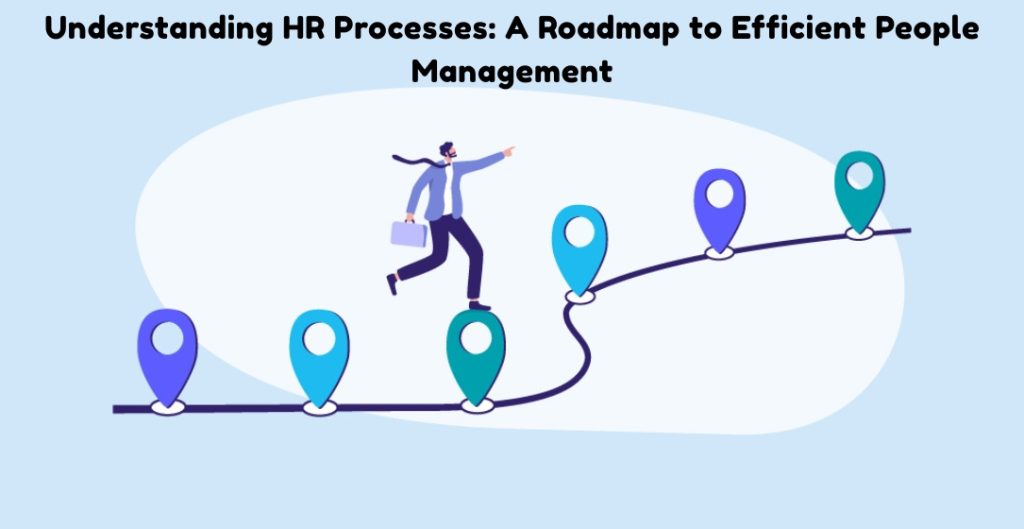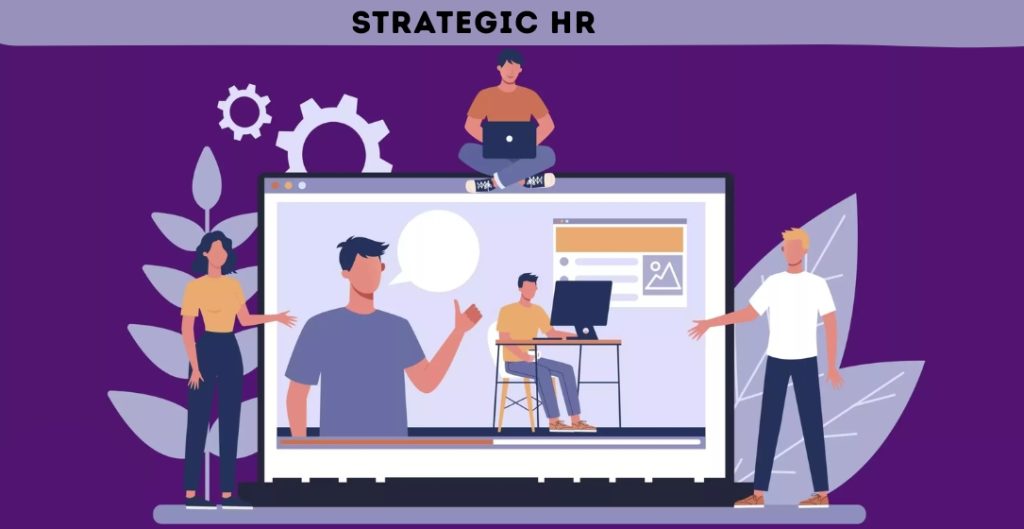
Table of Contents
Introduction
Let’s be real for a second—managing people isn’t easy. Whether you’re running a five-person startup or a buzzing corporate office, there’s always a mountain of stuff to handle. Hiring, onboarding, payroll, feedback loops—you name it. And that’s where HR processes come into play.
HR processes are kind of like the unsung heroes of every company. They quietly keep everything in order so teams can actually get stuff done without falling into chaos. In this blog (yeah, it’s going to be a bit of a deep dive), we’ll break down what HR processes are, why they matter, how to make them smarter, and honestly, how they can just save your sanity.
What Are HR Processes?
So, what exactly are HR processes? Think of them as the behind-the-scenes workflows that guide every stage of an employee’s journey—like a backstage crew running the whole show while the performers take the spotlight.
They’re structured, step-by-step systems that help with hiring, managing, training, and even saying goodbye (hopefully on good terms). Without them, you’d probably have a wild mix of chaos, missed paychecks, confused new hires, and burned-out managers.
Core vs. Strategic HR Processes
Here’s the deal: not all HR processes are created equal. You’ve got your:
- Core HR Processes: The basics—hiring, paying folks, tracking hours, that kind of stuff.
- Strategic HR Processes: The bigger picture—think career growth, employee happiness, succession planning, etc.
Both are super important. But while core keeps the engine running, strategic is what helps you scale and innovate.
Manual vs. Automated HR Processes
Not too long ago, HR was a very paper-heavy world. I mean, you had to dig through filing cabinets just to find someone’s performance review from three years ago. Now? Not so much.
Thanks to tools like HRMS (Human Resource Management Systems), a lot of these processes are automated. Resume screening? Automated. Payroll? Automated. Birthday reminders? Yep, even that.
But let’s be honest—some companies still do a lot of this manually. And while that’s okay for a small team, it gets messy real quick as you grow.
Core HR Processes
Alright, let’s get into the meat of it. These are the everyday HR processes most businesses deal with:
Recruitment and Selection
Finding the right person for the job isn’t just about scanning resumes. It’s a full-blown process:
- Posting the job
- Going through applications (some good, some… not so much)
- Interviewing candidates
- Making that final call
A poor hire can cost time, money, and a lot of energy. So yeah, this part deserves a lot of attention.
Onboarding and Orientation
Okay, so you’ve hired someone. Great! But now what?
You need to make sure they actually feel like part of the team. That’s where onboarding comes in. A solid onboarding experience can literally decide whether someone stays for a year or just a month.
Real story—I once joined a company where no one even showed me where the bathroom was. Not fun.
Payroll and Compensation Management
People want to get paid. On time. Accurately.
This includes:
- Salary calculations
- Bonus and overtime pay
- Tax and benefit deductions
Get it wrong once? You’ll hear about it. Get it wrong twice? You might be in trouble.
Time and Attendance Management
Tracking when people come in, leave, and take time off can feel like babysitting. But it’s important. Whether you’re using a fancy biometric scanner or just a digital timesheet, having this process nailed down keeps things fair and square.
Employee Records Management
You need to keep employee records neat and up to date—contracts, IDs, reviews, training logs, etc. Because if a legal issue ever pops up (hopefully not), you don’t want to be the one scrambling.

5 Strategic HR Processes You’re Probably Missing
Now, let’s zoom out a bit. These HR processes focus more on the long game.
Performance Management
This isn’t just about giving people a rating once a year. It’s about helping them grow. It includes:
- Setting goals (that make sense)
- Giving feedback (that’s honest but kind)
- Regular check-ins (not just annual reviews)
Trust me, employees know when you’re just ticking boxes.
Learning and Development (L&D)
People want to feel like they’re going somewhere. Offering workshops, online courses, or even just time to learn can make a big difference.
Like, ever had a job where you felt stuck doing the same thing forever? Yeah, L&D prevents that.
Succession Planning
Who takes over when your star employee leaves?
Succession planning makes sure you’re not caught off guard. It’s about grooming people internally so leadership transitions don’t feel like a panic attack.
Employee Engagement & Retention
Let’s face it: no one likes working in a dull, toxic environment.
Things like employee surveys, birthday shoutouts, flexible work policies, and even a simple “thank you” go a long way.
I mean, who doesn’t love feeling appreciated?
Workforce Planning & Analytics
This is the data nerd side of HR, and it’s pretty cool. You look at hiring trends, turnover rates, team performance, and make decisions based on real data—not just gut feelings.
Benefits of Optimizing HR Processes
Why go through all this effort?
Because optimized HR processes can:
- Save you tons of time and money
- Make your employees actually enjoy their jobs
- Keep you compliant with labor laws (very important!)
- Reduce turnover and improve performance
It’s kind of a no-brainer, right?
Tools and Technologies in HR Processes
There’s a whole tech playground out there for HR folks now:
- HRMS/HRIS systems: They centralize everything from payroll to performance.
- AI and automation: Ever had a chatbot schedule interviews for you? It’s real.
- Cloud platforms: Perfect for remote teams and storing everything securely.
If you want a great example of a platform that makes this stuff simple, check out vOfficeDesk. Super helpful for businesses that want to look smart and work smart.
How vOffice Desk Can Assist in Optimizing Your HR Processes
Imagine you’re balancing recruitment, onboarding, payroll, and employee inquiries simultaneously. Sounds overwhelming, right? That’s exactly when vOffice Desk comes into play to assist you.
Our platform is more than just another HRMS—it’s designed to be personable. Seriously personable. By automating monotonous administrative tasks and providing your team with self-service options for leaves, attendance, and documents, it takes care of the mundane so you can concentrate on what truly matters: your workforce.
Here’s a brief overview of what vOffice Desk provides:
- Smooth onboarding processes to ensure new hires feel welcomed
- Instant attendance monitoring without any manual mistakes
- Simple payroll processing with compliance integrated throughout
- Inbuilt performance tracking to make annual reviews less of a chore
- Tailored reports and analytics that will impress you in meetings
Additionally, we ensured it’s extremely user-friendly. Because let’s face it—nobody enjoys complicated software. Whether you’re an emerging startup or an established corporation, vOffice Desk seamlessly integrates and grows with you.
Interested in seeing it live? You know where to click: www.vofficedesk.com
Challenges in Managing HR Processes
Not gonna sugarcoat it—there are bumps in the road.
- Change resistance: People don’t always like switching to new systems.
- Privacy concerns: You’re dealing with sensitive info, so security has to be airtight.
- Tool integration: Getting all your apps and systems to talk to each other isn’t always easy.
And yeah, sometimes the tech you just paid big bucks for doesn’t work as promised. Been there.
Best Practices for Effective HR Processes
Want smoother HR workflows? Try these:
- Run regular audits—things change fast.
- Get employee feedback—honestly, they usually know what’s broken.
- Keep your HR team trained—tech moves fast, and you don’t want to fall behind.
It’s not about being perfect. It’s about improving a little every month.
Future Trends in HR Processes
Okay, now let’s geek out for a sec.
- AI and Predictive Analytics: Imagine predicting who might quit next month based on subtle patterns. Wild, right?
- Personalization: From onboarding to learning, people want experiences tailored to them.
- DEI: More companies are making Diversity, Equity, and Inclusion a serious part of HR—not just a checkbox.
According to HubSpot, 85% of HR leaders are already investing in tech that improves employee experience. That says a lot.
Conclusion
We’ve discussed a number of topics, including tech tools, strategic movements, essential responsibilities, and even some roadblocks.
The main conclusion, however, is that HR procedures are more than just tedious back-office work. They serve as the binding agent for your business. When implemented properly, they increase worker satisfaction, boost leaders’ self-esteem, and greatly increase business efficiency.
Perhaps now is the time to examine your own human resources procedures. What is effective? What’s sloppy? Is there anything better?
Be curious, start small, and don’t be scared to try new things. It’s not necessary for HR to be formal and corporate. It can be considerate, human, and—dare I say it—fun.
Yes, I did say that. HR can be enjoyable. 😉

